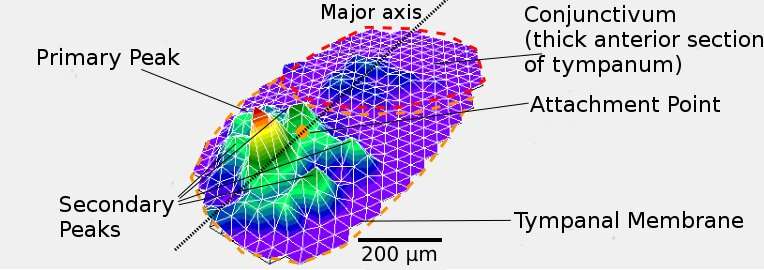Researchers at the University of Strathclyde in the U.K. have created bio-inspired microphones that can autonomously collect acoustic data with low power consumption.

Despite their small and simple hearing systems, insects can surprisingly hear a lot. For instance, a desert locust with a 2mm membrane can decompose frequencies comparable to humans. Mini bio-inspired microphones can be developed by studying insect hearing and using 3D printing to create custom materials.
Researchers at the University of Strathclyde in the U.K. have developed bio-inspired microphones that can gather acoustic data autonomously with low power usage. The researchers believe insect ears are a good model for reducing energy and data transmission costs, shrinking sensor size, and eliminating data processing.
The team draws inspiration from insect ears in various aspects. They employ 3D printing to create custom materials that imitate insect membranes on both chemical and structural levels. These synthetic membranes act as efficient and highly sensitive acoustic sensors. Unlike silicon-based approaches, which lack flexibility and customization, 3D printing is crucial to developing bio-inspired microphones. The researchers claim that the designed microphone’s interesting aspects occur at micro and nanoscales. Minor variations in thickness and porosity contribute to the former, while variations in material properties such as compliance and density play a role in the latter.
The data collection process of these microphones is inspired by biological systems, not just the material. They are designed to detect a specific signal, unlike traditional microphones that collect a range of information. This streamlined process, similar to how nerve endings detect and transmit signals, allows the sensor to discern triggers quickly without consuming much energy or requiring supervision. Bio-inspired sensors are highly suitable for hazardous or inaccessible applications due to their small size, autonomous operation, and low energy consumption, such as those embedded in structures or inside the human body.
3D-printing techniques inspired by biology can be utilized to tackle numerous other challenges, such as developing organoids for blood-brain barrier research or monitoring ultrasound structures.
Reference: Provided by Acoustical Society of America







